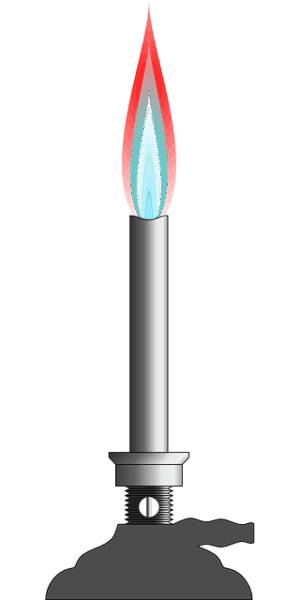Commercial air curtain heaters, powered by advanced technology, offer targeted heating at entrances while preventing cold drafts. Their capacity varies based on entrance size, desired temperature rise, and environmental conditions. Entity taxonomy mapping simplifies selection by categorizing heaters into low, medium, and high capacity groups, ensuring suitable solutions for specific applications like warehouses, retail stores, or offices. Energy-efficient models, including industrial air barriers and heated air curtains, provide versatile climate control options while minimizing energy consumption.
“Entity taxonomy mapping plays a pivotal role in simplifying the complex landscape of commercial air curtain heaters. This article delves into the strategic organization of these heating solutions based on capacity, enhancing efficiency for businesses. By understanding different models and their capabilities, buyers can make informed decisions.
We explore the purpose and benefits of this approach, offering a step-by-step guide to navigate the vast array of heater models. From improved customer experience to streamlined inventory management, discover how taxonomy mapping revolutionizes the way we categorize commercial air curtain heaters.”
- Understanding Commercial Air Curtain Heaters and Their Varied Capacities
- The Purpose of Entity Taxonomy Mapping in Heating Solutions
- Organizing Heater Models: A Step-by-Step Guide Using Capacity as a Parameter
- Benefits of Efficient Taxonomy for Businesses and Customers
Understanding Commercial Air Curtain Heaters and Their Varied Capacities

Commercial air curtain heaters are specialized systems designed to provide efficient and targeted heating at entrances, such as doors or gates, in various commercial settings. These heaters utilize advanced air curtain technology to create a layer of heated air that prevents cold drafts from entering while allowing personnel and goods to pass through freely. The capacity of these heaters varies significantly based on factors like the size of the entrance, the desired temperature rise, and environmental conditions.
Understanding the heating requirements for specific commercial applications is crucial when selecting an appropriate commercial air curtain heater. For instance, warehouse entrance heating demands higher capacities to handle larger areas and frequent traffic compared to retail store heating or door heating systems in offices. Energy-efficient heating solutions are increasingly sought after, not only for their operational cost savings but also for environmental benefits. Industrial air barriers and heated air curtains offer versatile options for achieving efficient entrance climate control across diverse commercial spaces.
The Purpose of Entity Taxonomy Mapping in Heating Solutions

Entity Taxonomy Mapping plays a pivotal role in streamlining and organizing the diverse landscape of commercial air curtain heater models. By categorizing these heaters based on their capacity, it becomes easier for businesses to navigate and select the most suitable heating solution for their specific needs. This structured approach is particularly beneficial when dealing with a vast array of products, ensuring that each model is accurately represented and compared.
For instance, this mapping helps identify and distinguish between different types of commercial entrance heating systems, retail store heating solutions, and warehouse entrance heating equipment. It allows professionals to quickly understand the capabilities of air curtain technology, door heating systems, and industrial air barriers, making informed decisions to achieve optimal energy-efficient heating while maintaining control over entrance climates.
Organizing Heater Models: A Step-by-Step Guide Using Capacity as a Parameter

Organizing commercial air curtain heater models by capacity is a systematic process that streamlines the selection and deployment of these efficient heating solutions. It begins with identifying specific performance metrics, with capacity being a primary factor due to its direct impact on space coverage and energy consumption. Next, gather detailed specifications for each model, including heat output (measured in BTU or kW), operating voltage, and energy efficiency ratings.
Once the data is compiled, create categories based on capacity ranges. For example, you might categorize models into “Low Capacity” (for smaller retail stores or offices), “Medium Capacity” (suitable for warehouses and industrial entrances), and “High Capacity” (designed for large manufacturing facilities and open-plan spaces). This hierarchical approach simplifies inventory management and ensures the right heater is chosen for any commercial entrance heating, door heating systems, or warehouse entrance heating application. Additionally, considering factors like air curtain technology, energy efficient heating capabilities, and industrial air barriers within each category allows for a more precise matching of solutions to specific climate control needs.
Benefits of Efficient Taxonomy for Businesses and Customers

Entity taxonomy mapping offers significant advantages for businesses and customers alike when applied to commercial air curtain heater models. By organizing these heaters based on capacity, it becomes easier for businesses to navigate and select the most suitable equipment for their specific needs. This streamlined process enhances operational efficiency by ensuring that each space is equipped with the right level of heating power, resulting in cost savings and reduced energy consumption.
For customers, a well-structured taxonomy simplifies the selection of commercial entrance heating solutions like air curtain technology and door heating systems. It allows them to compare various models, understand their features, and make informed decisions based on performance metrics such as energy efficiency. This results in effective industrial air barriers and heated air curtains that contribute to entrance climate control in retail stores, warehouses, and other commercial settings.
Entity taxonomy mapping is a powerful tool for categorizing and understanding the diverse range of commercial air curtain heaters available. By organizing these models based on capacity, businesses can efficiently manage their product offerings, making it easier for customers to find suitable heaters for their specific needs. This streamlined process enhances customer satisfaction and supports informed purchasing decisions, ultimately benefiting both parties in the dynamic market of commercial heating solutions.






